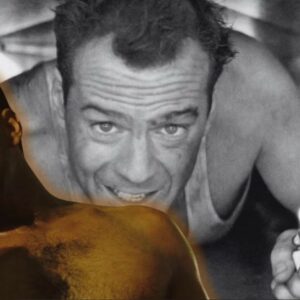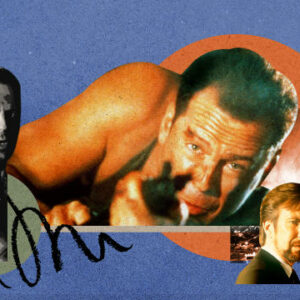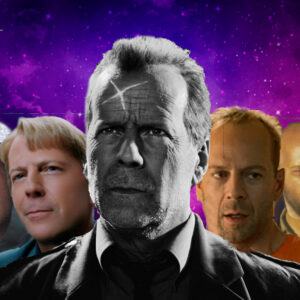Introduction
Tina Turner—“The Queen of Rock ‘n’ Roll”—was a force that could ignite a room, capture a crowd, and set the stage ablaze with just her voice and movement. Her impact on the music and television industries resonates deeply; she wasn’t just a performer but a phenomenon, a cultural icon with unyielding energy and raw magnetism. Yet, in the midst of her electrifying performances, often overlooked are the directors who crafted, honed, and elevated her TV appearances. These directors were essential collaborators, acting as orchestrators behind the scenes, helping Turner’s unique talent find its fullest expression on-screen. They weren’t merely capturing her in action; they were sculpting each moment into the impactful performances we remember. These visionaries are rarely the stars of the story, but their guidance, foresight, and collaboration helped define the contours of Tina’s legendary on-screen presence.
Directors as Visionaries
In every televised performance, there exists an alchemy that transforms raw talent into something larger-than-life. Directors are essential in this process, channeling Tina Turner’s innate power and authenticity into a medium designed for mass consumption. Each director brings a distinct creative vision to every show, one that complements and intensifies the performer’s style. Directors like Steve Binder and David Mallet, who directed some of Tina’s most memorable televised moments, had an almost instinctive grasp of her vibe. Whether guiding her performance for a talk show, a concert special, or a music video, they managed to align her artistry with the show’s unique tone and aesthetic.
Steve Binder, who famously directed Elvis Presley’s ’68 Comeback Special, is a name synonymous with artist-centered television. His understanding of lighting, atmosphere, and the tension of live performance made him an ideal collaborator for Turner. Binder was able to showcase Tina’s grit and dynamism by creating a setting that didn’t restrain her but let her take center stage. It’s in the hands of such directors that Turner’s artistry was respected and amplified. Directors like Binder could visualize the unique contrast she brought to the screen—her softness in certain moments, a deep-seated strength in others. Each director’s unique perspective helped frame her performance style, often sharpening the tension between Tina’s ferocity and finesse.
Shaping Performance Flow
The performance on television requires precision; every camera angle, every transition, every shift in lighting builds up the overall impact. Directors play a crucial role in shaping this experience, orchestrating the ebb and flow of each moment to create a sense of movement and drama. For Tina Turner, a director’s role extended beyond merely filming a performance; they needed to construct a dynamic environment where her unparalleled energy could be channeled and magnified. David Mallet, who directed several live concert broadcasts and music videos for Tina, knew how to work with her intense energy. Mallet, who is known for his work with rock legends like Queen and David Bowie, understood that capturing Turner’s charisma wasn’t about restraining it but building around it.
Directors carefully choreograph transitions and shifts, shaping the on-screen experience to showcase Turner’s dynamism and stage presence. For instance, during a high-octane number, a camera might pull back to reveal Tina’s full body, showing her lithe, powerful movements across the stage. During more intimate songs, directors often focus on close-ups, allowing her emotional intensity to resonate through the screen. The balance between wide shots and close-ups, quick cuts and lingering frames, was never accidental. Directors structured these choices to shape the story they wanted to tell of Tina Turner’s raw talent and the energy that she could project beyond the stage.
Bringing Out Tina’s Best
Directing Tina Turner was a collaborative art. Directors worked alongside her, refining each performance style specifically for television. Tina wasn’t merely executing someone else’s vision—she was a fully engaged partner in crafting each appearance. Directors would work with Tina to ensure that her on-screen performances were not only impactful but tailored to fit the medium of television, where subtleties count as much as spectacle. In this setting, directors were not just instructing; they were coaching, providing insights, and encouraging her to reach deeper, go further.
The collaborative process between Tina and her directors was often an intricate dance. Directors like Mallet knew how to build a rapport with her, earning the trust necessary to push her to her best performances. They might suggest tweaks to timing, small adjustments to movement, or even encourage her to let go a bit more, to trust the camera’s ability to capture her power. Directors, after all, understood the technical aspects that could make or break a performance: the way lighting could contour her silhouette, how camera angles could frame her movements in powerful ways, and how editing could make her struts feel even more formidable.
Iconic TV Moments
Some of Tina Turner’s most memorable performances owe their lasting impact to the synergy between her talent and the director’s vision. In these moments, directors weren’t just filming her; they were making her an indelible part of television history. Her 1982 “Saturday Night Live” performance of Proud Mary, for instance, is a testament to this. The director of that episode used rapid cuts and dynamic close-ups, moving the audience through the intensity of her famous “nice and rough” transformation with each shot. With every close-up of her ecstatic, almost defiant expression, the camera became part of the performance, amplifying her energy.
Another unforgettable performance came during the recording of Private Dancer for a television special, where director Brian Grant brought a cinematic flair to the production, blending gritty lighting with soft close-ups. Grant used visual contrasts to highlight the song’s aching vulnerability, emphasizing Tina’s expressive eyes and evocative gestures. These details provided viewers with an intimate portrait, contrasting with her powerhouse reputation and giving her fans a glimpse into the soulful depth behind her show-stopping persona.
One of the pinnacles of Turner’s television performances was the 1985 Live Aid concert. David Mallet directed her performance of State of Shock alongside Mick Jagger, creating a once-in-a-lifetime performance that would go down in rock history. Mallet’s understanding of energy flow and crowd engagement allowed him to capture not just the chemistry between Turner and Jagger, but also the palpable electricity that charged the entire stadium. His camera work transitioned seamlessly between close-ups of Turner and Jagger, wide shots of the band, and sweeping views of the crowd, creating a performance that felt simultaneously intimate and expansive. Mallet’s directorial choices made this performance feel alive and immediate, a true high point in televised rock history.
Conclusion
Directors may operate behind the scenes, but their influence on Tina Turner’s televised legacy is undeniable. They were the visionaries who saw beyond the immediate spectacle, crafting each performance into something lasting and impactful. These directors didn’t just work with Tina; they collaborated with her to craft a shared vision, understanding that while her raw talent was undeniable, their art could help shape it into moments that millions would remember.
Tina Turner’s ability to electrify an audience needed a medium as dynamic as her talent itself, and television provided just that. Yet, it was through the guidance of visionary directors that her full potential was realized on screen, creating performances that have been etched into our collective memory. So while Tina’s star power shines brightest, it’s worth remembering the hands and minds behind the camera, those essential creators who amplified and immortalized the magic of Tina Turner for generations to come.





